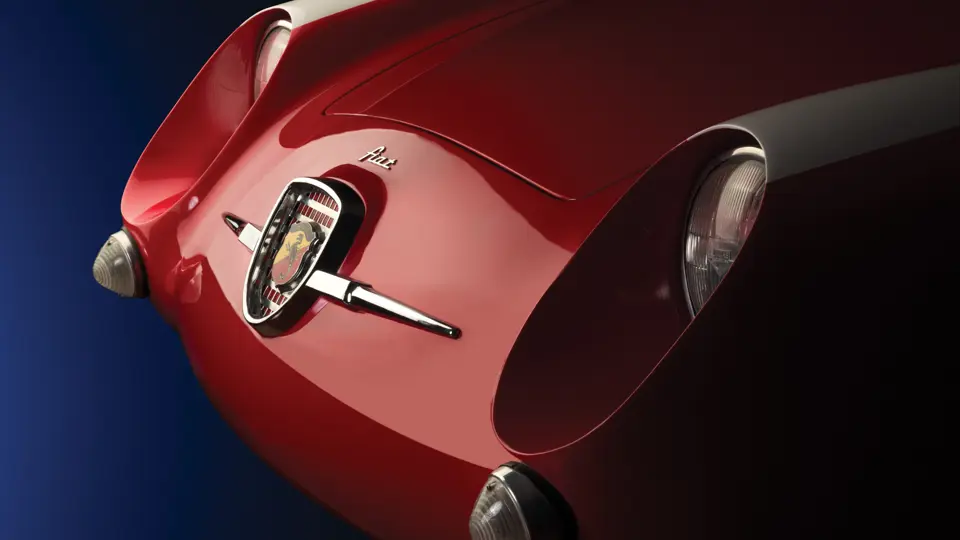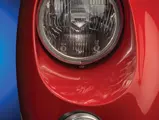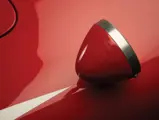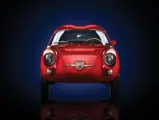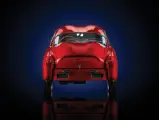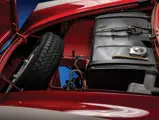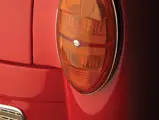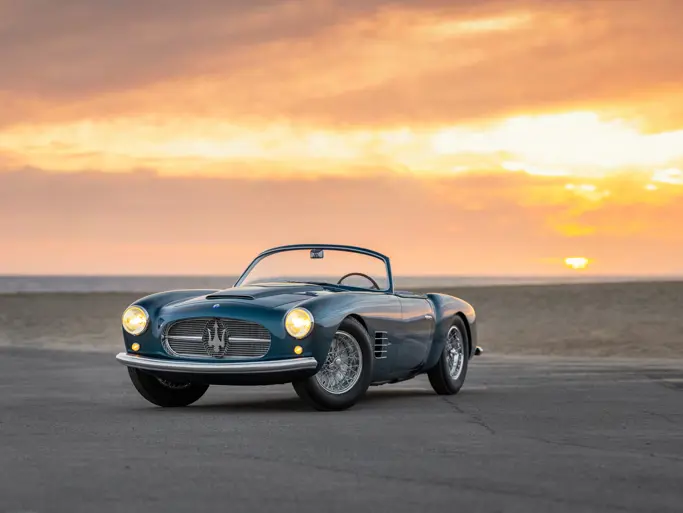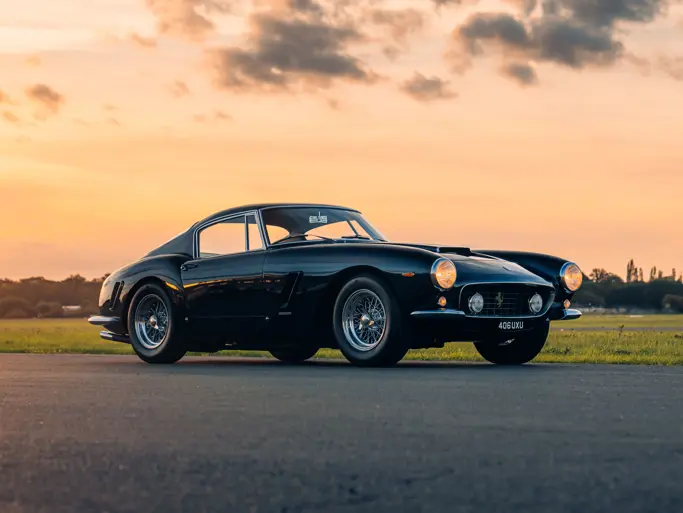
1958 Fiat-Abarth 750 GT 'Double Bubble' Coupé by Zagato
{{lr.item.text}}
€75,600 EUR | Sold
{{bidding.lot.reserveStatusFormatted}}
- Stunning coachbuilt Zagato “Double Bubble” coachwork
- Equipped with a Mille Miglia-specification Abarth engine
- Recently completed restoration
- Superbe carrosserie Zagato « Double Bosse »
- Équipée d'un moteur Abarth aux spécifications Mille Miglia
- Restauration terminée récemment
48 hp, 767 cc overhead-valve inline four-cylinder engine, four-speed manual transmission, front and rear independent suspension, and four-wheel hydraulic drum brakes. Wheelbase: 79 in.
Moteur quatre-cylindres en ligne, 767 cm3, 48 ch, soupapes en tête, boîte manuelle quatre rapports, suspension avant et arrière indépendante, freins hydrauliques à tambours sur les quatre roues. Empattement: 2 007 mm
Whilst Fiat was best known in the late 1950s for making small, inexpensive, and very dependable automobiles, it took the magic of Carlos Abarth, a gifted mechanic who in today's world would be called a “tuner”, to bring out the fire in the belly of those little four-bangers. The Abarth Zagato Coupé was unveiled in 1956, and it didn't take long for it to start making news, as it took a 2nd in class at the Mille Miglia and, in the following year, a total of five cars finished the Mille Miglia, with Alfonso Thiele driving one to a 1st place finish in the 750-cubic centimetre class. Many a racer felt the “sting” of being passed and ending up behind a car with the Abarth touch, which could be one of the reasons why the company adopted the scorpion on its coat of arms.
This example spent three decades in the hands of enthusiast Rik Beeson, of Santa Cruz, California, who had several Fiat-Abarths over the years. In 2001, it was purchased from Beeson by another Californian, Dana MacDuff. At the time of MacDuff’s acquisition, the car was in largely original condition and sported traces of roundels on the bonnet and doors, which is indicative of racing activity prior to Beeson’s circa 1971 acquisition of the car.
At the time of MacDuff’s acquisition, the car was virtually complete, including the soft materials used for the patterns, which are verified by photos that have recently been supplied by MacDuff. The current motor, number 693328, has been rebuilt and was supplied by Beeson shortly after MacDuff acquired the car. It is a true Abarth Mille Miglia 750 engine which is equipped with a billet crankshaft and correct Abarth stamps, and photos of it are on file. The engine is also equipped with the correct Weber 32 IMP/e carburettor, as well as a correct Abarth intake manifold and cylinder head. The car is also fitted with original Abarth wheels and a correct tachometer and steering wheel.
The Fiat-Abarth was acquired by the current owner-restorer around 2005, and he was responsible for bringing the project to its conclusion in the beautiful form seen today. The beautiful red exterior is complemented by brown leather seats and light brown carpeting. Today, the car remains adorned with a number of original items, including the Sekurit glass, Lucas lenses, a Magneti Marelli distributor, and Raydyot headlamps, as well as the desirable Mille Miglia-specification engine with its original components. Some items, such as the taillight bezels, which were found to be in excellent original condition, have been detailed and nicely blend with the overall quality and presentation of the car. This is a great opportunity to acquire a Fiat-Abarth with the stunning Zagato “Double Bubble” coachwork, and this example, which is eligible for a number of vintage events, would make a great addition to any collection.
A la fin des années 1950, la marque Fiat était connue surtout pour ses voitures de petite taille, simples et économiques. Mais le « sorcier » Carlos Abarth, préparateur de génie, a réussi à transformer ces modestes automobiles en véritables petites bombes. Dévoilé en 1956, le coupé Abarth Zagato n'a pas tardé à faire parler de lui ; il remportait une deuxième place aux Mille Miglia et, l'année suivante (1957), cinq voitures ralliaient l'arrivée de cette course éprouvante avec pour celle d'Alfonso Thiele la victoire en catégorie 750 cm3. De nombreux pilotes se sont sentis « piqués » d'être dépassés par une Abarth, ce qui est peut-être une des raisons du choix du scorpion comme emblème de la marque.
Cet exemplaire a passé 30 ans entre les mains de Rik Beeson, de Santa Cruz, Californie, un passionné ayant possédé de nombreuses Fiat-Abarth. En 2001, cette voiture a été achetée par un autre Californien, Dana MacDuff. A cette époque, elle était encore largement en état d'origine et des marques d'anciens numéros sur le capot et les portes trahissaient une activité en compétition avant l'acquisition par Beeson, en 1971 environ.
Quand MacDuff en a fait l'acquisition, la voiture était pratiquement complète, y compris les garnitures intérieures, comme en témoignent des photos récemment fournies par MacDuff. L'actuel moteur, n°693328, récemment restauré, a été fourni par Beeson peu après l'achat par MacDuff. Il s'agit d'un vrai moteur Abarth Mille Miglia 750, avec un vilebrequin usiné et les marquages Abarth corrects, dont des photos figurent au dossier. Ce moteur est équipé d'un carburateur Weber 32 IMP/e conforme, ainsi que d'une culasse et de collecteurs d'admission et d'échappement Abarth. La voiture présente des jantes Abarth d'origine, de même qu'un volant et un compteur de vitesses conformes.
Cette Fiat-Abarth a été achetée en 2005 environ par son actuel propriétaire, qui a pu mener le projet à son terme et obtenir le présent résultat, superbe. La magnifique carrosserie de couleur rouge est complétée par des sièges en cuir brun et des tapis brun clair. Aujourd'hui, la voiture est équipée de nombreux accessoires d'origine comme le verre Sekurit, des optiques Lucas, un distributeur Magneti Marelli, des phares Raydyot, ainsi que le désirable moteur Mille Miglia avec ses composants d'origine. Certaines pièces comme les supports de feux arrière étaient en excellent état de préservation et ont été soigneusement restaurés pour être à la hauteur de la présentation générale. Cette voiture constitue un des moyens les moins chers d'acquérir une carrosserie dotée de l'étonnante « Double Bosse » Zagato, et elle représentera un apport de valeur à n'importe quelle collection, tout en étant éligible à un grand nombre d'évènements historiques.
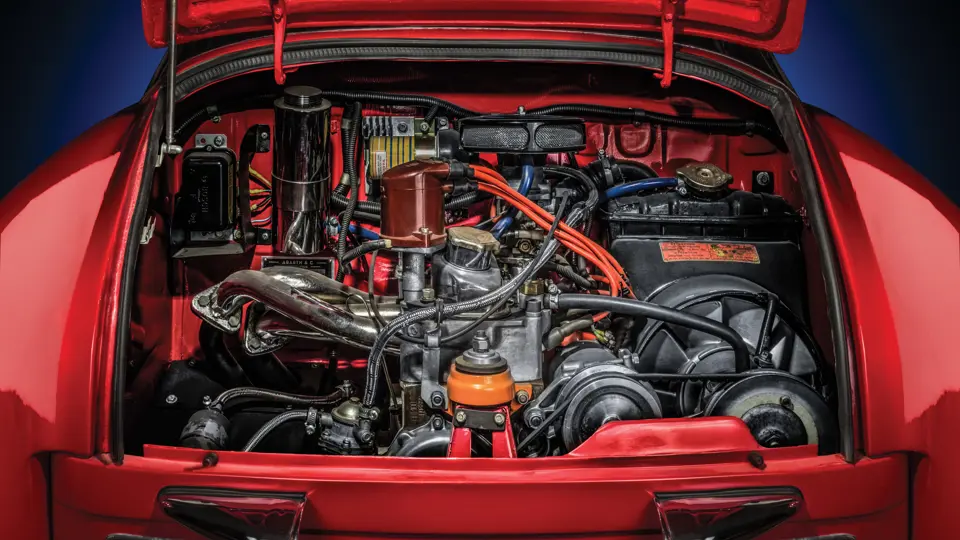
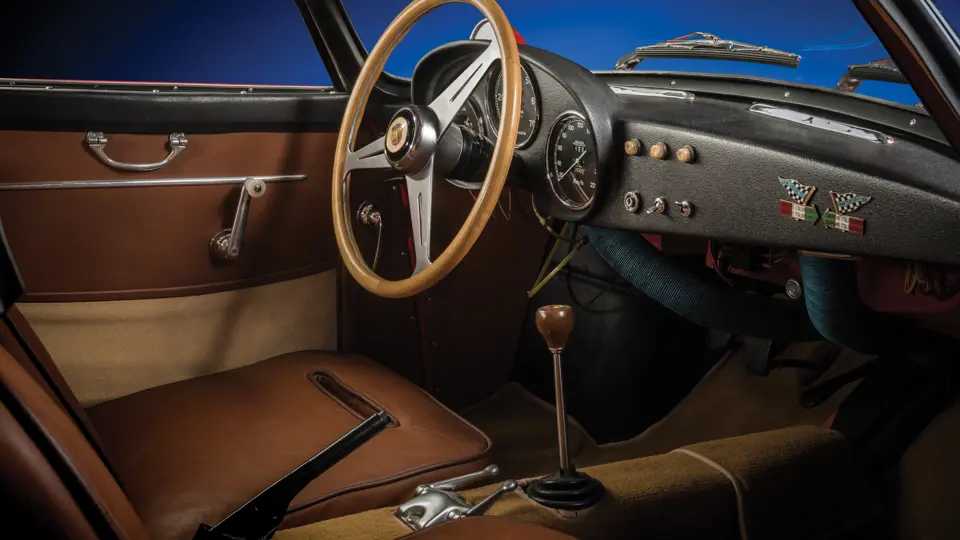


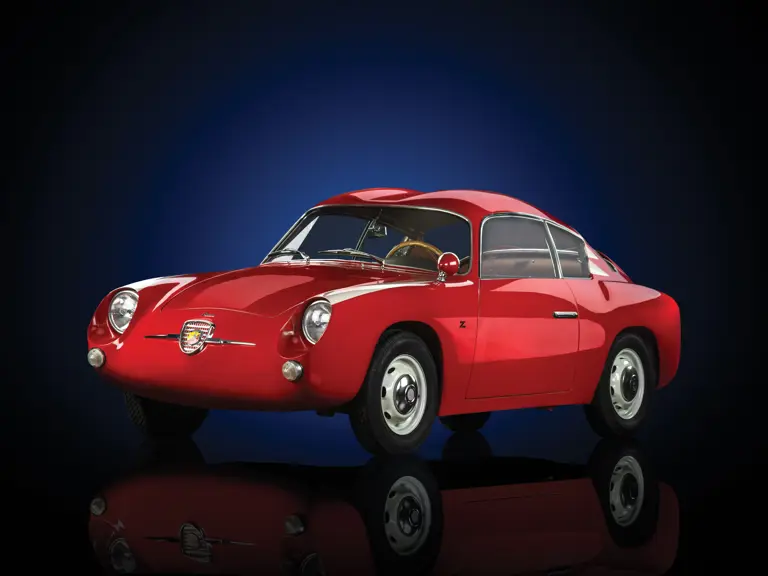
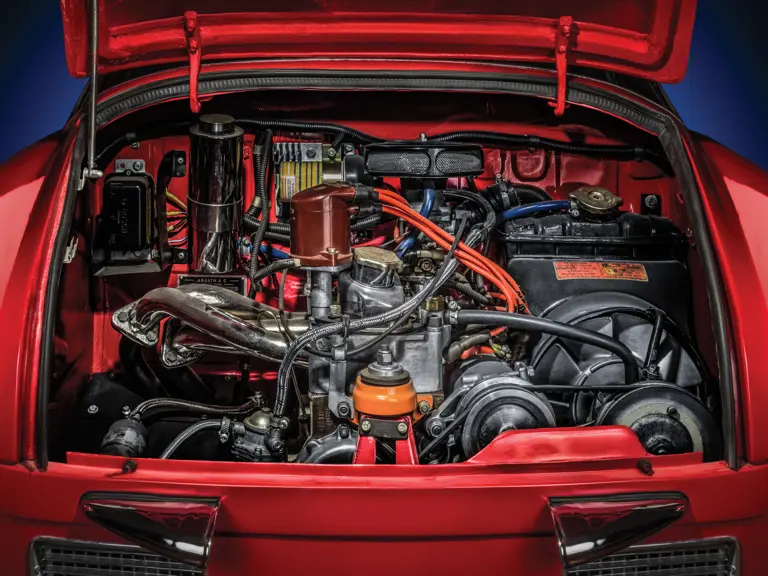
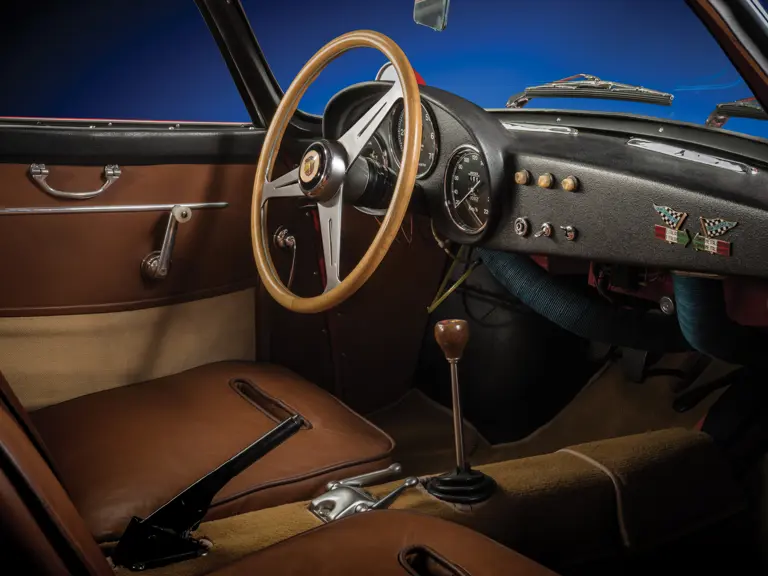
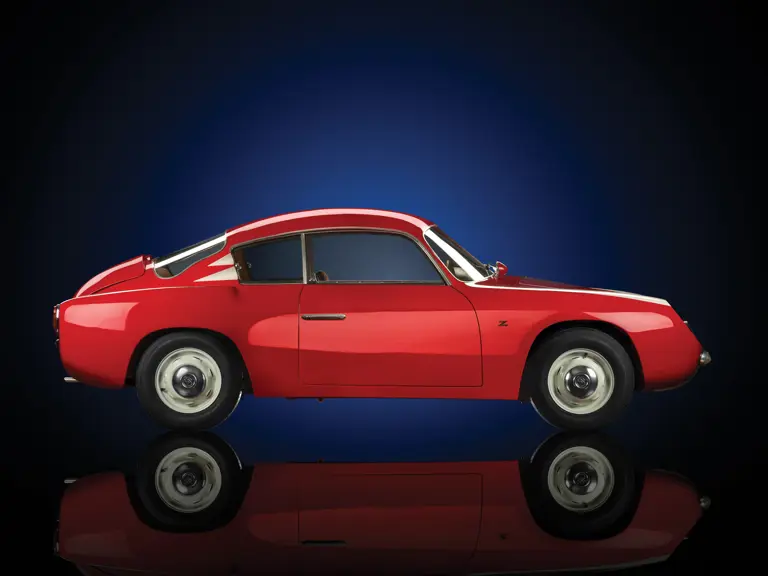

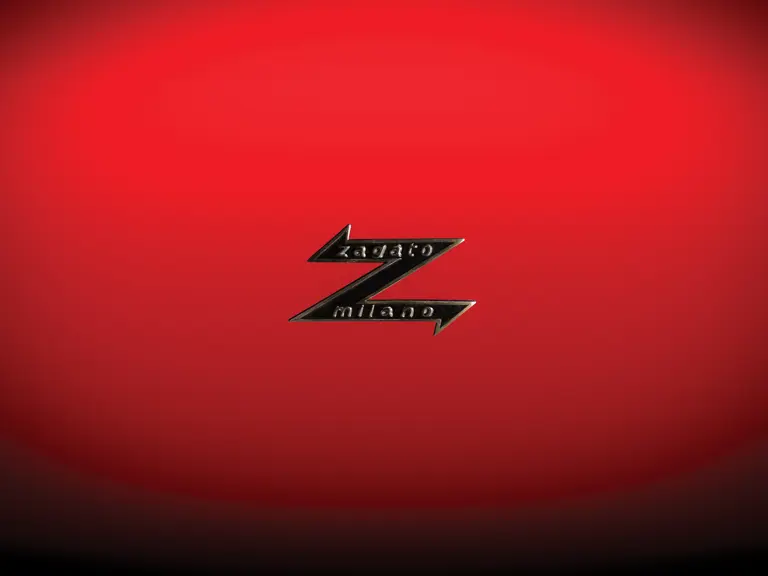
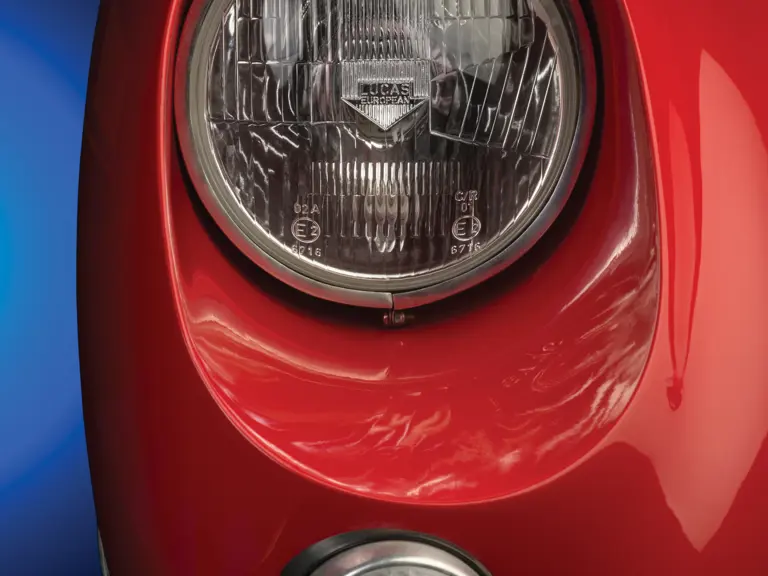
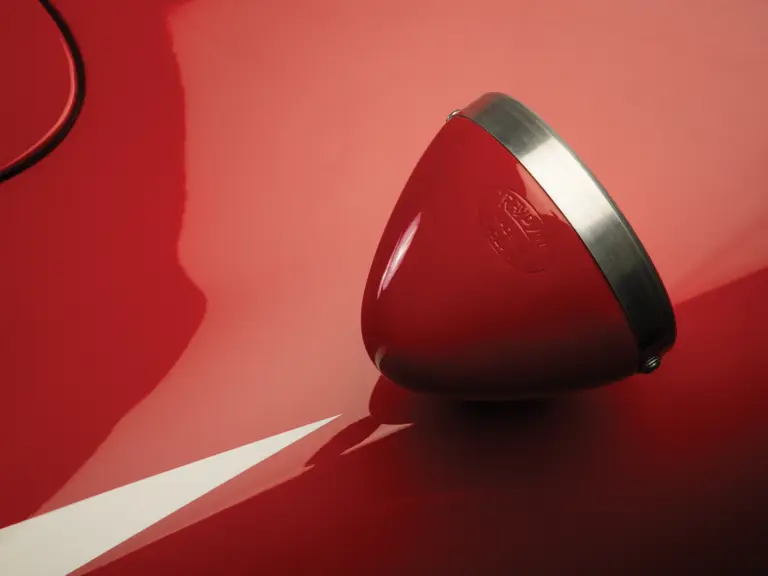
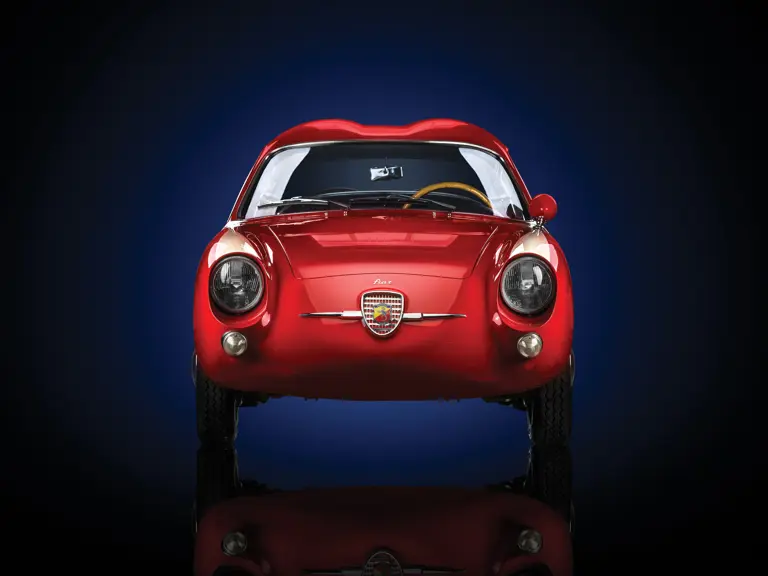


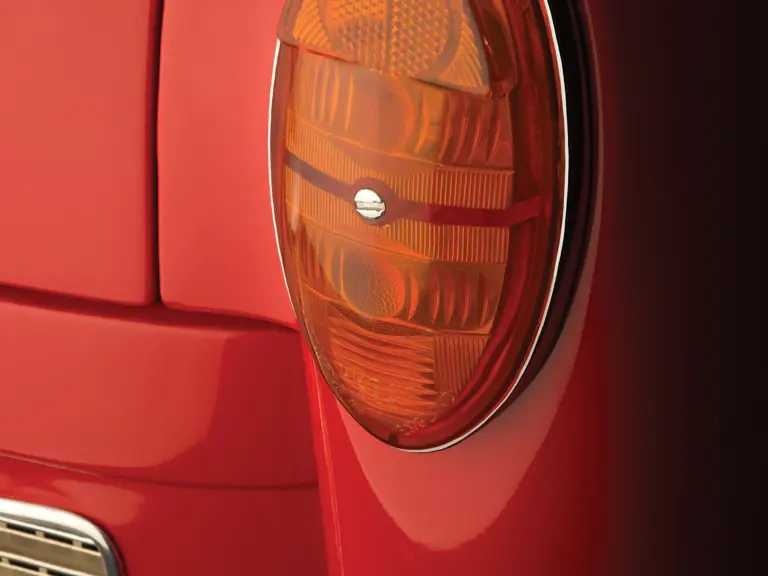
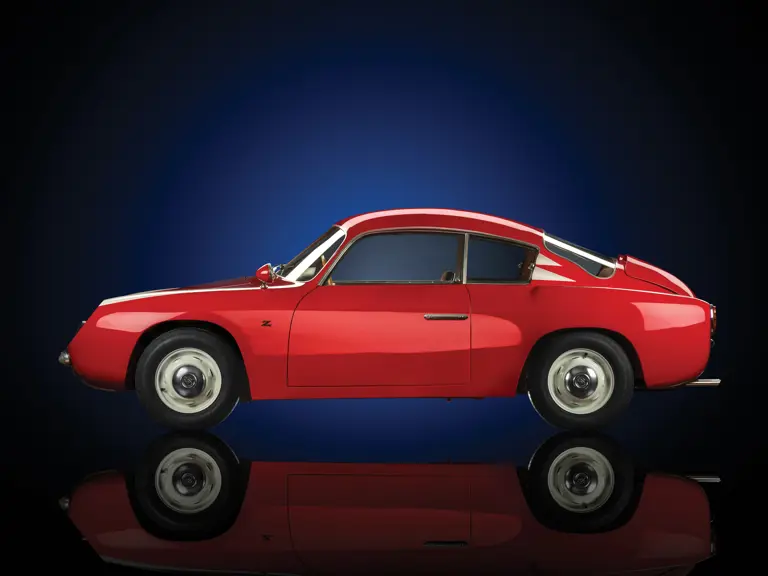
 | Paris, France
| Paris, France
